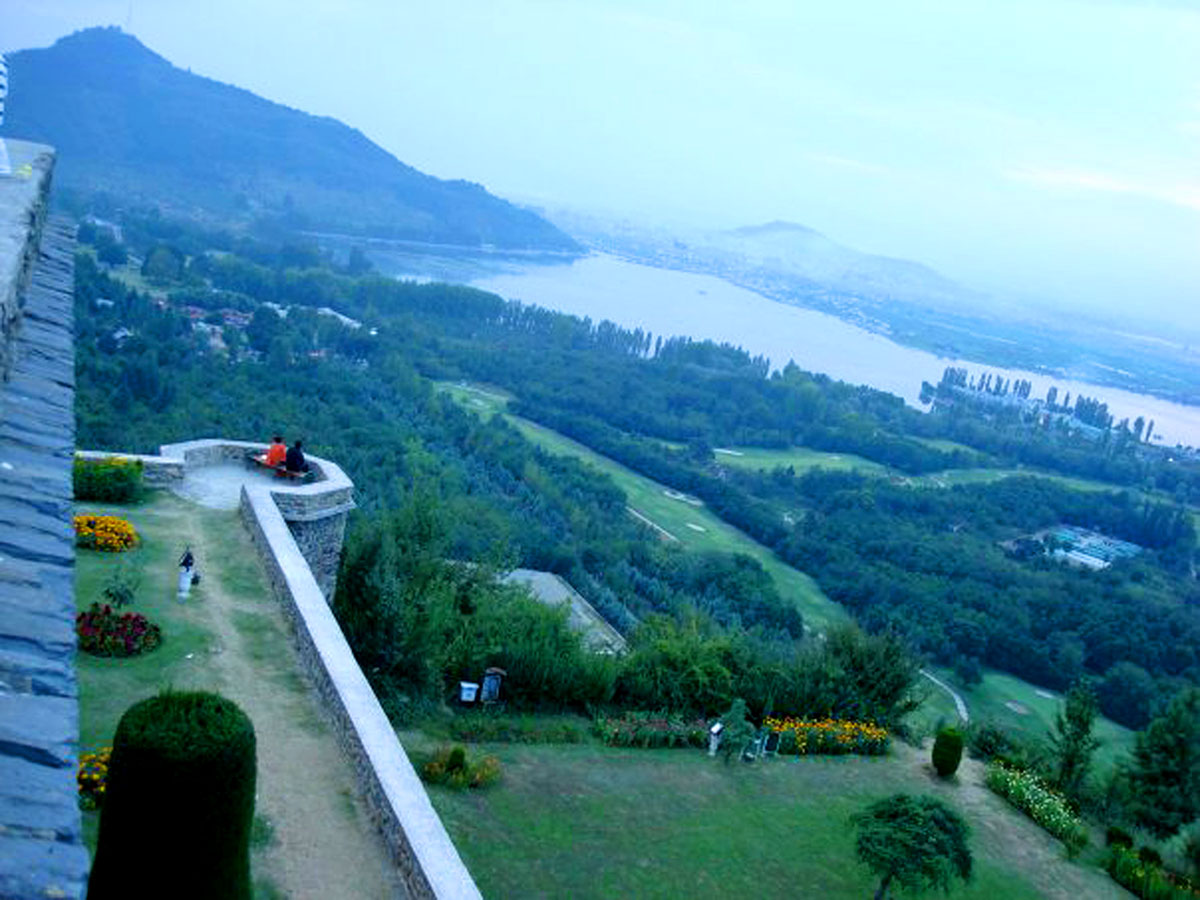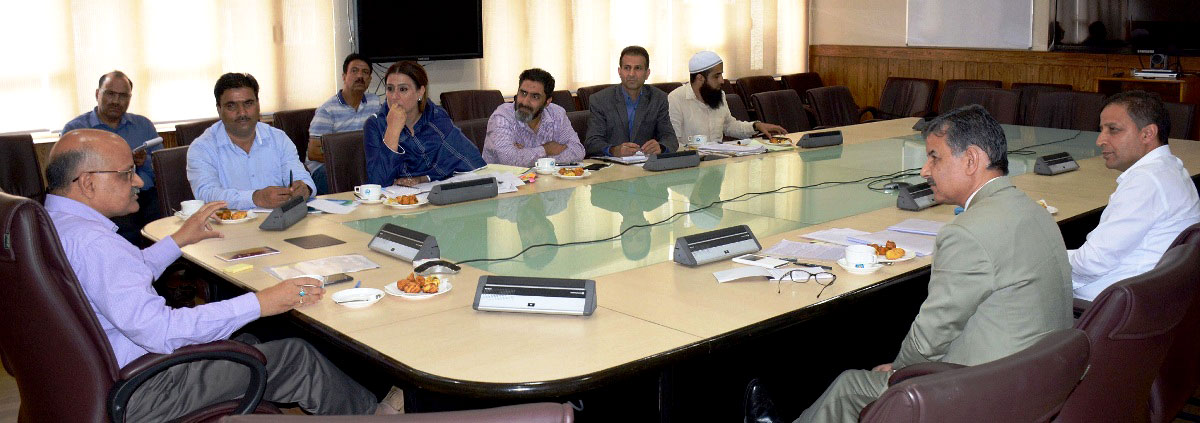Over the years, Jammu and Kashmir has invested huge money in a network of golf, a luxury sport, but the number of players is yet to cross a 1000 mark

In a landmark decision, Jammu and Kashmir Chief Secretary BVR Subrahmanyam literally decontrolled Kashmir Golf Course (KGC), one of state’s seven golf courses and threw it open to the have-nots. Now anybody willing to become member of just-revived Kashmir Golf Course on the MA Road can pay a nominal fee of Rs 100 and play a game that has historically remained the domain of the rich and the bourgeoisie.
Officials said the decision of opening the KGC for golfers, tourists and local youth is aimed at providing the youth to channelize their energies and ensure their personal development.
This particular golf course that remained inundated in the devastating September 2014 floods was given to the J&K Bank for restoration under its Corporate Social Responsibility (CSR). This decision was always adversely commented and talking in hushed tones because the golf does not fall in the basic public interest that a financial institution should have ideally taken up.
Spread over 500 Kanals (25 hectors) of land, KGC is considered the second oldest golfing club in India after the Royal Golf Course of Talay Gunj in Kolkatta. Developed by British in late nineteenth century during autocratic era of Kashmir state, the KGC was the major golfers’ address till the Royal Springs Golf Course (RSGC) overtook it in last decade. Then came floods and devastated it.
After JK Bank took over its rebuilding, it engaged international designer Phil Ryan of Pacific Coast Design (PCD) and booked an expenditure of Rs 20 crore on it. Regardless of whether it should have done it or not is something that is purely a governance issue. But the infrastructure has come up well.
KGC opening for everybody and anybody is something that makes the decision-making different and interesting.
Golf is a rich man’s game. The golf in Jammu and Kashmir is literally an exclusive club of people holding power, authority and money. Individuals who undergo some mobility in their careers or who want to get closer to the power-circuit essentially play golf. These golf courses are huge networking spaces. Despite all this, Jammu and Kashmir has less than 1000 golfers, and despite having the best infrastructure, not a single international golfer was ever born in the state.
Jammu and Kashmir has a vast network of golf courses. In Srinagar, there are three: KGC, the RSGC and the Police Golf Course on the Boulevard. There is one each in Gulmarg and Pahalgam. The Sidhra Golf Course was started only two years back and there is a small golf course at Sansar. A Greenfield golf course is coming up in Leh as well. The Armed forces have their own network of golf courses also.
A conservative estimate suggests that these golf courses have taken an investment of more than Rs 180 crore excluding the costs of the land on which they have come up. RSGC, one of the Asia’s top five golf courses, is manned by around 90 permanent staffers as the number of daily wagers is more than that. Insiders said these assets are maintained and managed by almost 500 people and every course’s maintenance bill for a year is between one to two crore rupees.
RSGC on Zabarwan Hill slopes overlooking the Dal lake was laid by US-based Robert Trent Jones Jr.-II in 2002, the firm that has designed world’s top 500 golf courses including those in Bangkok and China. It requires more than three crore rupees a year. With its fairways turfed with American cool-weather grass of diverse shades – Rye, Kentucky blue and tall frescoes, the 76 acre RSGC is equipped with fully computerized imported sprinkling system and all its 18 fairways have different variations. Dr Farooq Abdullah axed a vast City Forest – that was also abode of wild life experimentation – to satisfy his golf appetite.
In Pahalgam and Gulmarg, two major golf courses operate outside Srinagar. Formally thrown open in 2011 summer, the 18-hole Pahalgam course is spread over 140 acres of lush green fields and has already taken Rs 30 crore. Gulmarg hosts world’s highest golf course that started operating in 1890. It is operational and has taken more than Rs 12 crore.
Jammu has an 18-hole Tawi Golf Course in Sidhra; it has taken an investment of more than Rs 42 crore where 220 golfers are registered. Leh, the new tourist destination with more foreigners visiting the Shangri La than Srinagar, a Greenfield golf course is almost ready. Spread over 76 hectares, it has already taken Rs 12 crore.
Tragically, however, there are fewer players. RSGC has a membership of 534 but the daily footfalls have never touched 200. These are mostly local players, the biggies from business, bureaucracy, and politics.
In April 2013, the government passed a bill for the creation of Golf Courses Development and Management Authority with the Chief Minister as its boss. When it was given a go by the House, it sought Rs 61 crore funds.
Policymakers who have been pushing this infrastructure that is exclusively for elite and the bourgeoisie, have only two arguments. That this helps create impressive green spaces and protect them. And Jammu and Kashmir being a tourist destination, the golf courses do not earn directly but are indirectly money multipliers.
They also admit that the experimentation has failed because of the situation. There have not been many golfing events in last many years. The one that gave Kashmir a better space on TV was when a giggling Sushmita Sen teed off for a 100 golfer that Tag Huer flew to Srinagar in 2012. The tourism department did a series of events, but in most of them, the investment also went from the public kitty. For many years, the state tourism ministry would hold an Ambassador’s Cup by inviting envoys to India from influential Western and Islamic block who would mix golf with diplomacy. The participants were routinely funded to fly to Srinagar but when it came to their own investment for golfing events, they would cite advisories of their countries and the situation.
This situation of public spending is highly imbalanced and is not currently pro-people. The state’s expenditure on overall sports has remained peanuts for last many decades. There are hundreds of schools lacking even basic playgrounds in the state sector. Perhaps in the current fiscal, the allocations improved to Rs 350 crore are the highest in a long era.

But in the historic decision-making of permitting individuals at nominal fee to a world class golf course, there is a problem. Nobody can play it unless he or she has a minimum of Rs 50,000 to invest in the equipment, and normally the player must have something to pay to the caddies or the green fee. In this hugely commented decision, the positive side is that exclusivity of the turf is gone. The other part is that there is a possibility that some boys and girls might emerge as the new golfing stars from the state. For that the government must also think of a sort of academy where there are instructors and handlers who can help the new generation understand a game that elites were playing behind the concrete walls, concertina wiring and manicured bushes of Zabarwan.















